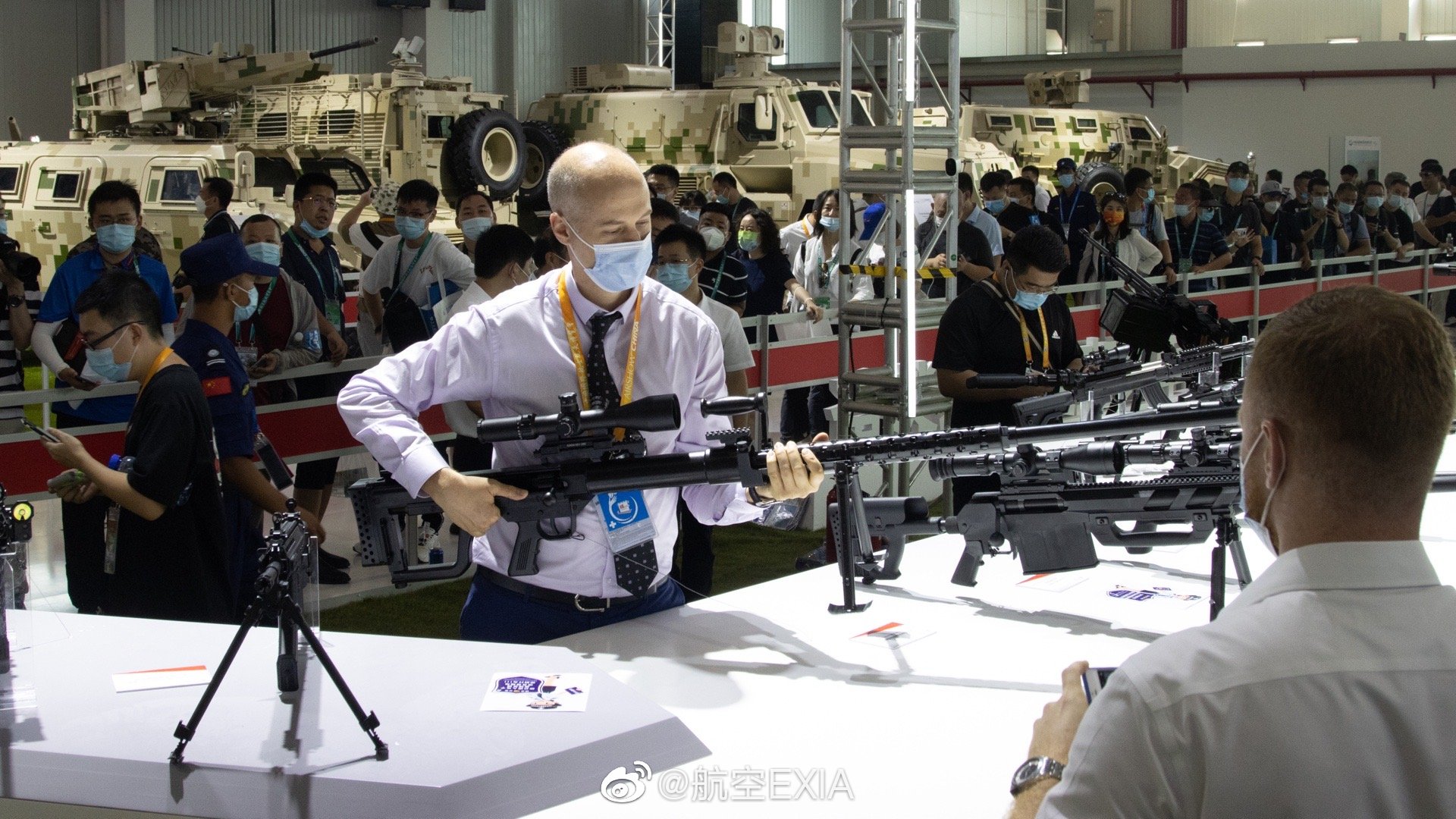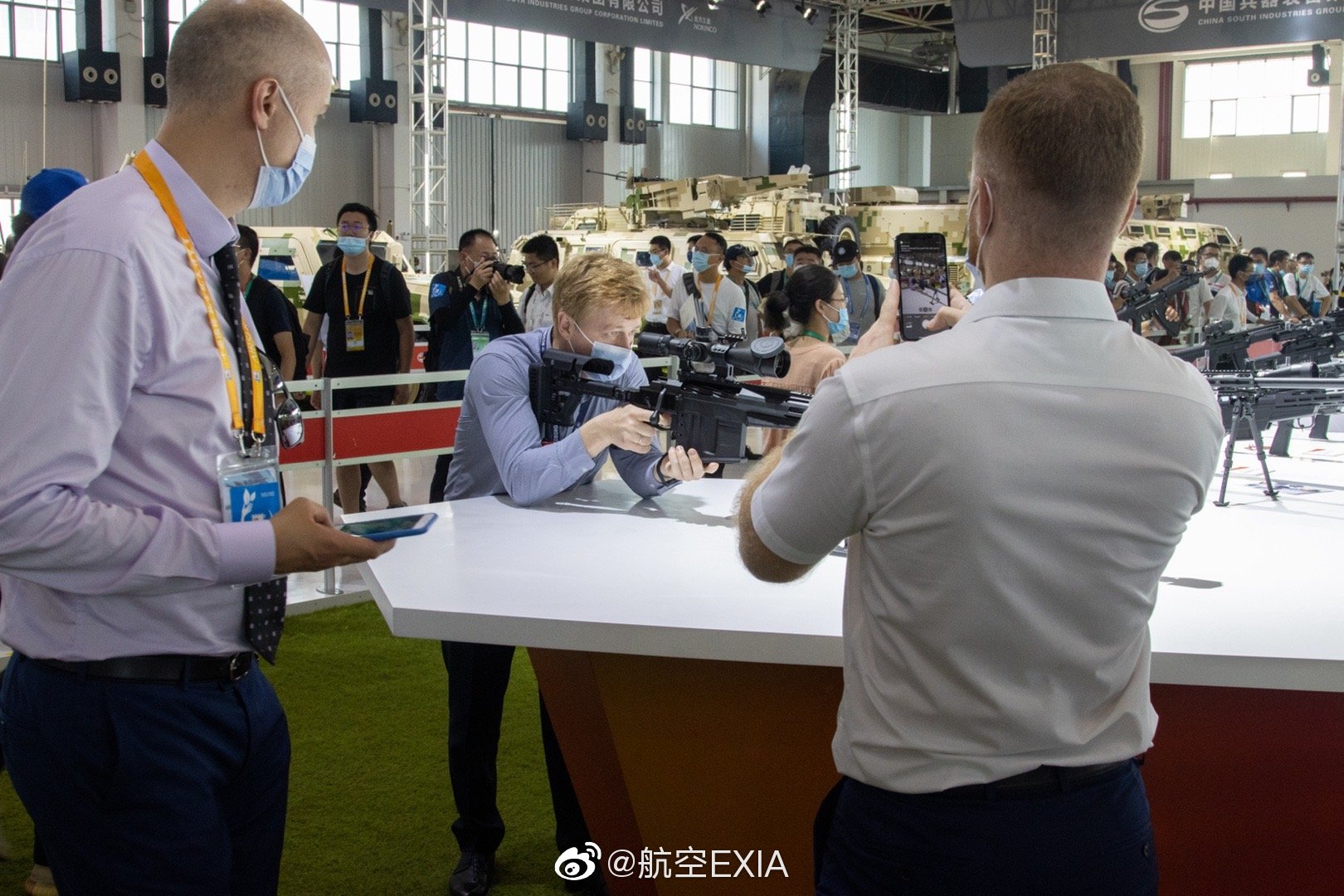I believe the 6.8 will be helpful in CQB environments as well as long ranges. When all US soldiers will be wearing LV.4 body armor then fighting at close ranges with 5.8mm doesn't seem to cut it will. I seriously hope the PLA is considering a higher and stronger penetrating bullet like the US.True to a point, the problem is that you I think underestimate the “Secondary concern” if the US Army just wanted long range vs Taliban fighters firing from high positions with plunging fire. The US army could have adopted 6.5x39mm in M4 based carbines. A higher velocity ammo that offers ranges out past 400m with minimal recoil. Instead they are pushing a round with both high velocity and mass. Now in standard ammunition vs peer grade body armor the 6.8x51mm still isn’t a money back guarantee on AP. But with a hardened core AP it would be. Conventional 5.56x45 nor 5.45x39 or even 5.8x42mm even with a hardened core AP isn’t a guaranteed AP vs modern lv4 plate. You have to move up to 8.6mm to AP modern armor plate with standard core ammo.
You are using an out of date browser. It may not display this or other websites correctly.
You should upgrade or use an alternative browser.
You should upgrade or use an alternative browser.
PLA Small arms
- Thread starter Vanguard1688
- Start date
MwRYum
Major
The war game(s) were those at Zhurihe that, broke the mold of going through the motion and dialed up the intensity, put the troops onto the mindset on how to win a future war. It was said to be "extremely humiliating" to many of those proud units that they've to taught how to fight again.In a near peer conflict, the scenarios involving infantry combat will have soldiers just calling in support to strike spotted enemy positions, particularly if they are out of range. I'm not going to talk how a war between equivalent powers will have infantry fights at the bottom of the focus compared to heavy stuff and technology.
Since a decade or so, China as reformed their army and command structure to be similar to USA, including weapon doctrines. The reason seems to be due to a war game they did with two teams representing PLA and USA respectively. The red team got their butts handed to them so hard that some of the commanders cried! They decided that the USA model would be more ideal. (Ironically to fight USA)
Proxy infantries are how modern wars are being fought. Yet, whenever a state decides to do an direct attack, they ALWAYS just use some form of ordinance, like drones, missiles or jet airstrikes. The Chinese are not different in this philosophy, yet there is a "difference". Since the end of the Korean war, the Chinese learnt their lesson, they had a big focus on mass infantry, yet had an chronic lack of firepower, leading them to invest a lot of firepower today.
We saw that the PLA has some guns designed for long range fights and penetration. The atributes of some of their guns suggest that they don't want to enfatize too much on extensive "sniping" or long range small arms combat, instead engaging targets with explosive support. Even USA is not different, their soldiers in the middle east tend to just call air support to engage enemies when they are outside of their comfort range.
"Counter-terrorism" doctrine is almost an euphemism of USA and NATO fighting middle eastern tribes. The militias lack effective body armor, which allows even small rounds to retain their wounding effectiveness even at long ranges. They also lack heavy support and anti air, which allows the West to pound them without retaliation. Crew served weapons bring heavy firepower for duking out and for sieges, but are not of much use due to their "slowness" to the counter-insurgency scenarios where the enemy "dissapears" whenever they are not in a fight, and where things happen when they decide to attack a certain patrol or outpost using a certain amount of militants for the attack. They are literally police dealing with guerrilla. It might be of use for dealing with proxies in conflict, but engaging other world powers is a completely different ball game
I'm not much of an expert on Chinese geography and geopolitics, but maybe not so much of the most likely hypothetical land combat zones will share the same characteristics of the deserts and mountains of Iraq and Afghanistan for long range combat. The exception might be Xinjiang, with the possibility of an small group of USA black ops trying to do stuff, but it will be hard for them to put vehicle support in here.
The numerous predictions for an war with China even says that USA won't even get to beach their troops on land in the end. The action will boil down to cyber attacks, missiles and ships.
The PLA infantry fighting strategy without artillery, seems to involve a mechanization mobility that allows them to get closer to the enemy to fight from a relatively shorter range.
Basically, a CCTV documentary series about the military reform a few years back does address the problem that the PLA "got too comfortable" and thus the reform to their mindsets back straight so to speak.
Doctrine wise, China always looking at updating their doctrine, but whether to adopt the new ones is more a case-by-case basis - fortunately for them, they've some places like the Zhurihe and a large sample base to run their experiment(s) with.
Urban fighting will have to deal with brick-and-mortar and concrete structures, which favours higher caliber weapons and other "specific tools" such as thermobaric weapons.US started work on 6.8mm round because of experience in Afghanistan with long distance fires against snipers.
Armor penetration is only a secondary concern of that program.
If the PLA is designed to fight in a Taiwan conflict scenario with a lot of urban fighting long distance fires would be a least concern.
Much more useful to have a short rifle which is easy to maneuver in tight spaces.
Plus PLA already uses larger caliber than 5.56mm NATO.
5.8mm will cut through in CQB for sure. 5.8mm might have issues at +75mm. China doesn't need it for their goals. I'm not in active service anymore but my friends say the 556 weapons are better for CQB but we never really did CQB like ever in Afghanistan. I don't think US foresees fighting in a dense urban environment.I believe the 6.8 will be helpful in CQB environments as well as long ranges. When all US soldiers will be wearing LV.4 body armor then fighting at close ranges with 5.8mm doesn't seem to cut it will. I seriously hope the PLA is considering a higher and stronger penetrating bullet like the US.
If I remember, someone said that the PLA's close-range engagements are within 200 meters. I don't think the 5.8 would be enough to puncture LV.4 armor at that range.5.8mm will cut through in CQB for sure. 5.8mm might have issues at +75mm.
Penetrating body armor is not really important. At 200 meters, you're not scoring many hits unless you are a machine gunner or marksman. Also, don't forget US and China are both heavily mechanized forces so it may just end up being vehicles doing most of the damage.If I remember, someone said that the PLA's close-range engagements are within 200 meters. I don't think the 5.8 would be enough to puncture LV.4 armor at that range.
But isn't 200 meters pretty close though? I say penetration mainly because if you've seen the land where China fights in including both the mainland and taiwan then you will see that there will be a lot of engagements below 100 meters. Heavy dense jungles and large-scale cities will most likely be the main place of conflict and all those are less than 100 meters. As for vehicles, both the mainland and taiwan are filled with uneven and inaccessible terrain that not even light vehicles fewer tanks can go through without getting stuck or ambushed. That's why I believe the PLA needs stronger firepower for those close-up engagements.Penetrating body armor is not really important. At 200 meters, you're not scoring many hits unless you are a machine gunner or marksman. Also, don't forget US and China are both heavily mechanized forces so it may just end up being vehicles doing most of the damage.
But isn't 200 meters pretty close though? I say penetration mainly because if you've seen the land where China fights in including both the mainland and taiwan then you will see that there will be a lot of engagements below 100 meters. Heavy dense jungles and large-scale cities will most likely be the main place of conflict and all those are less than 100 meters. As for vehicles, both the mainland and taiwan are filled with uneven and inaccessible terrain that not even light vehicles fewer tanks can go through without getting stuck or ambushed. That's why I believe the PLA needs stronger firepower for those close-up engagements.
200m is a lot farther than you think when you're getting shot at. On a range, 200m is not problem. 6.8mm will not defeat that much more body armor than 5.56mm if that's your concern. Penetrating body armor is not a big deal either. Body armor doesn't cover a lot and you can get shot plenty elsewhere. In my experience, appendages get hit plenty and many times can remove you from the battlefield for quite a bit of time or combat ineffective permanently.
I think I said 556 could defeat body armor up to 100m but I think it was more 50m. There's a lot of factors to take into consideration.
I don't want to go too far off tangent but defeating or penetrating body armor with small arms is not a big deal for a million reasons. I know people get hung up on specs like for tank rha but in practice, these numbers mean very little.
Honestly, I don't believe the US will even get anywhere near the mainland nor taiwan before they are all sunken by missiles but having the foresight in case something does go wrong or if such a scenario does come up is good.I'm not convinced that China is planning on fighting US with small arms at all. What is the scenario? City fighting in Taiwan is maybe a wet dream for some hawks but is it really what you will optimize your army around?


